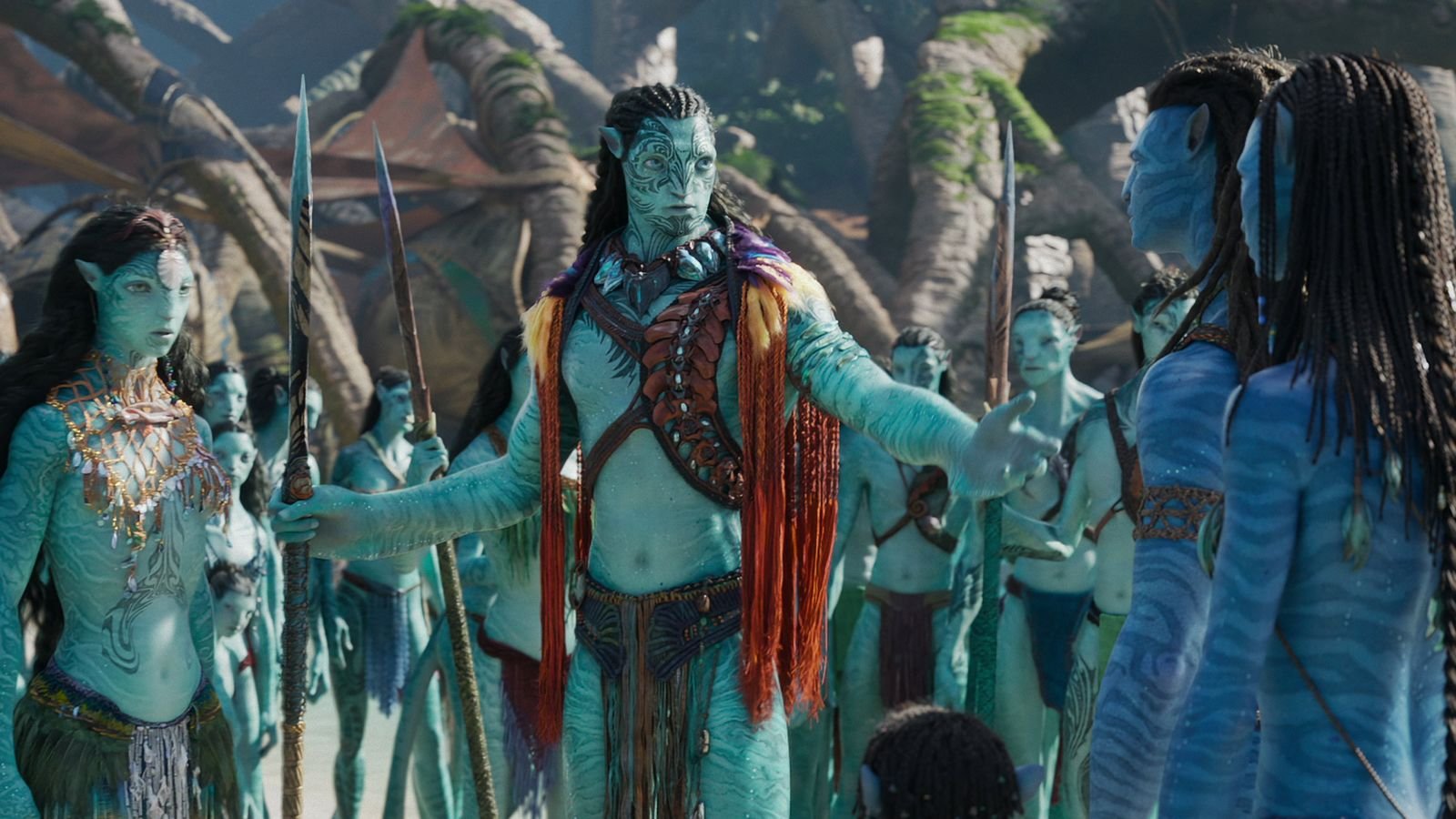Avatar: The Way of Water [Review]
By: Mithrandiel
When the world moves as quickly as it does, 5 years ago seems like a lifetime away…but 13 years? Might as well be ancient history.
And yet, James Cameron has invited audiences to return to the world of Avatar, after the 2009 sci-fi hit smashed box office records. After over a decade of going dark, The Way of Water represents the 2nd installment of Cameron’s 5 film franchise, as he is planning on more rapid-fire deployment of the subsequent movies to release every 2 years.
In this way, The Way of Water is doing some heavy lifting in both re-acclimating audiences to the world of Pandora, and also making the world, and its characters, compelling enough to return to the theaters again, and again, and again, in the years to come.
The Way of Water spends a good chunk of the opening hour (out of of the larger 190-minute narrative journey) re-familiarizing folks with the core characters on both sides. Our heroes include the marine-turned-Na’vi savior Jake Sully, his mate Neytiri, and their family, which is a hodgepodge of biological children (sons Neteyam and Lo’ak and daughter Tuk) and adopted/extended family (Kiri and Spider).
The visual spectacle of Pandora and the biography of their growing family sets the stage for despair as Jake’s former colleagues and comrades - the “Sky People” - return to Pandora. No longer simply seeking “unobtanium” (how on earth that cleared the studio I will never know), the military forces have been charged with making the lush planet a new home for humanity, and “pacifying the locals” just happens to be next in the logical order of things.
While the overarching “villain” is equal parts militaristic colonization and natural devastation, Colonel Miles Quaritch graciously returns to play the role of antagonist once again. Only this time, a little more blue.
Being on the business end of Neytiri’s arrows at the conclusion of the previous Avatar film, the Colonel finds himself reanimated (along with his squad) in Na’vi bodies. Now in bigger, stronger bodies, and with a hunger for revenge against Sully for turning against his comrades, the central conflict of Way of Water becomes much more personal.
After Jake realizes that Quaritch is back, and the circumstances of his return, he determines that they need to leave their home in order to avoid exposing their friends and family to danger. With a heavy heart, the family departs for the Metkayani tribe - reef people who are spiritually connected to the ocean.
There are inherent tensions, even with Jake’s notable background as having successfully repelled the Sky People once before. The Metkayani had heard of this conflict, but they have no reason to worry. After all, war is a distant threat.
The tensions aren’t solely political either - the children do their best to acclimate to this new land - aided by Tsireya, daughter of the Metkayani chief. (Lo’ak particularly appreciates Tsireya’s attention) However, Kira’s odd behaviors and the Sully children’s distinct hands make them a target of teasing, which sparks conflicts between the Sully boys and Metkayani children.
A semblance of normalcy is achieved after various trials, but inevitably, the conflict between Quaritch and Jake catches up to the Sully family, and the aftermath of the climactic and highly emotional conflict sets the stage for numerous plot-threads to be explored in subsequent films.
Unsurprisingly, the film is gorgeous. Indeed, The Way of Water maintains Avatar’s broader reputation of presenting a wholly unique and beautiful world. “Alien” as the Na’vi are, the unique aesthetic becomes second nature to the viewer in short order.
Narratively, I found it a bit indulgent in exposition in its opening chapters, as well as a particular arc around whaling. It probably could have cut around 20-30 minutes between these two sections without much being lost substantively.
Furthermore, I can appreciate the thematic elements in Cameron’s storytelling: from the evils of deforestation, to echoes of the brutal colonizing practices that we so often learn about in college-level history courses. That being said, it’s a bit ham fisted at times. I fear an opportunity to drive a vital message home with viewers could be lost given that there’s very little nuance.
While it took some time for me to warm up to the movie, I was properly engrossed by about 90 minutes in, and the final act features some breathtaking action sequences and a gripping emotional hook. With Wakanda Forever in the rearview, I wasn’t ready for another gut punch of an emotional ending, and yet here we are.
Overall, while I may not have been lost to the wonder and spectacle of Pandora when it first arrived in 2009, I can see the appeal in returning to this broad, lush world. While Cameron leaves little room for nuance in his narrative, he successfully delivers a thrilling blockbuster that once again makes a compelling argument: for some movies, only the silver screen will do.




